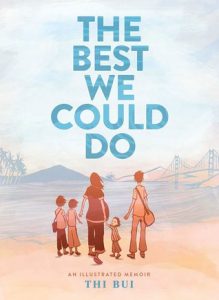The WELLMIG team again takes stock of our reading during the past year. As in previous years, we have read numerous academic publications to inform our project and our own writing on migration, but in addition, we have also read lots of books for pleasure and entertainment. Below are a few we want to highlight.
Marie Louise Seeberg
Although I have not been reading with a conscious aim of learning about migration, I realize that I do travel through time and space a lot in my reading – Douglas Adams’ classic The Hitchhiker’s Guide to the Galaxy is the most extreme in that respect.
Then there are all the whodunits from around the world that I like to relax with. In 2019, I have been reading Chinese, Japanese, and Israeli ones in addition to Italian and Canadian. I chiefly enjoy these for the descriptions of everyday life and insights into how society works in other parts of the world. Other fiction, too, can be rewarding in that respect. For instance, Middle England by Jonathan Coe has helped me, and many others, along the way in trying to understand how Brexit could happen.
If I were to name a winner for me personally in 2019, it would be this beautiful graphic novel: The Best We Could Do, by Thi Bui. It is an honest and touching narrative about her own life growing up in a Vietnamese refugee family in the US. What stays with me is how her difficult relationship with her parents leads her to try to find out why they are the way they are – a universal story, in many ways, but also specific for migration. Migration really does accentuate the human condition. The «graphic» genre has included some major works in this respect over the past decades, for me beginning with the amazing artwork of Marjane Satrapi in the Persepolis autobiography.
Speaking of graphic novels, I have also read Guy Delisle’s often interesting (if not exactly profound) graphic travelogues from various cities of the world. An animator by profession, his work has brought him to places I have never seen and probably never will see, such as Pyongyang, Shenzhen, and Burma.
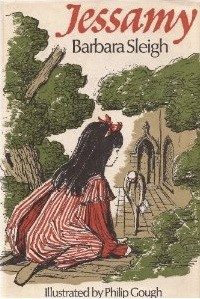 Books also enable me to travel through time. My first time travel experience was reading Jessamy by Barbara Sleigh – a children’s time travel classic where the protagonist finds herself existing in two parallel lives in exactly the same house, one life in the 1960s (when the book was written) and the other in 1914.
Books also enable me to travel through time. My first time travel experience was reading Jessamy by Barbara Sleigh – a children’s time travel classic where the protagonist finds herself existing in two parallel lives in exactly the same house, one life in the 1960s (when the book was written) and the other in 1914.
Historical fiction is another form of literary time travel that I enjoy because it shows me times and places that would otherwise have remained unknown to me. In 2019, I read some good (and very different!) ones: Eva Hoffman’s Lost in Translation, Charles Dickens’ Bleak House, Once Upon a River by Diane Setterfield, and Pachinko by Min Jin Lee.
 So as you see, I have travelled a lot this past year. Mostly, I have seen the world through the eyes of other authors, for better or worse – and if the authors are good ones, they may show me things I might not have seen, had I travelled in the flesh. Perhaps such travel will become more important to many of us as climate change forces holiday travellers to change our habits.
So as you see, I have travelled a lot this past year. Mostly, I have seen the world through the eyes of other authors, for better or worse – and if the authors are good ones, they may show me things I might not have seen, had I travelled in the flesh. Perhaps such travel will become more important to many of us as climate change forces holiday travellers to change our habits.
Marta Bivand Erdal
I’d like to highlight four books, some newer, some which I revisited, and really appreciated in 2019. The themes of mobility and migration, of encounters with the unfamiliar and of humanity in the midst of such encounters, runs through in very explicit, or more implicit ways. Simultaneously, I think these books offer a necessary normalization of migration and an urgent call to acknowledge how racialization continues, in ways which, I would argue, do not provide the opportunity to maintain an impartial bystander role for anyone.
 ‘Flights’ by Olga Tokarczuk was first published in Kraków, Poland in 2007, but was later translated into English. It is very much about mobility, about leaving, and about fluidity and fluctuation. As the review of the book in the New Yorker in 2018 notes, its approach to mobility is hopeful. Reading it, it is interesting to reflect on how an author shaped by contemporary free EU mobility, or by increasing fears over immigration, by contrast to one perhaps shaped more by a restrictive communist context without opportunities for extensive international travel, would have considered the issues of mobility which Tokarczuk raises and ponders.
‘Flights’ by Olga Tokarczuk was first published in Kraków, Poland in 2007, but was later translated into English. It is very much about mobility, about leaving, and about fluidity and fluctuation. As the review of the book in the New Yorker in 2018 notes, its approach to mobility is hopeful. Reading it, it is interesting to reflect on how an author shaped by contemporary free EU mobility, or by increasing fears over immigration, by contrast to one perhaps shaped more by a restrictive communist context without opportunities for extensive international travel, would have considered the issues of mobility which Tokarczuk raises and ponders.
‘The European Tribe’ by Carol Phillips was first published in London in 1988. It is a notebook of reflections and narratives, based on a year of travel around and across Europe, and its edges, from Morocco to Moscow. ‘Black people have always been present in a Europe that has chosen either not to see us, or to judge us as an insignificant minority, or as a temporary, but dismissible, mistake’ writes Philips (p. 128). Whether for the question of what is Europe, or that of who are Europeans, or the more urgent one of a need for anti-racism in Europe today, this is a short, excellently written text, well-worth reading, more than 30 years after its publication.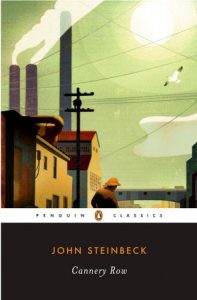
Visiting California in the summer, we stopped in what today in honor of John Steinbeck’s book Cannery Row, is called Cannery Row. A small seaside town, where a cannery indeed once formed the center of activity (now replaced by tourism). Cannery Row was first published in 1945 and is a novel set in the Great Depression. At a very basic level, it deals with the troubles of migrant workers with few opportunities, fewer rights, and nevertheless a will to muddle on. The figures of Lee Chong, the local grocer, of the marine biologist, and the others in the novel, are shown to be complex characters, who in most cases seek and succeed in experiencing good times in the midst of an arduous life.
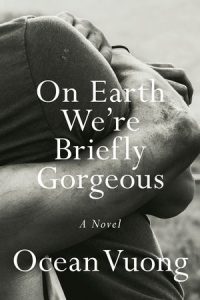 ‘On Earth We’re Briefly Gorgeous’ by Ocean Vuong, published in 2019, is the story of Little Dog and his coming-of age, as the son of Vietnamese immigrants in the US. The book is written as a letter from Little Dog, to his mother, a letter she would not be able to read, and touches both on who Americans today are (or can be), but also on the ways in which lives lived in completely different – contradictory, even – worlds, somehow are held together. In many ways, the themes of the book reflect classic themes of both immigrant fiction and of academic research on the migrant condition, especially of the children of migrants’ experiences, but the power of Vuong’s storytelling provides the necessary emotional spectrum to bring this story to life. There is no doubt that this is made possible by Vuong’s own biography.
‘On Earth We’re Briefly Gorgeous’ by Ocean Vuong, published in 2019, is the story of Little Dog and his coming-of age, as the son of Vietnamese immigrants in the US. The book is written as a letter from Little Dog, to his mother, a letter she would not be able to read, and touches both on who Americans today are (or can be), but also on the ways in which lives lived in completely different – contradictory, even – worlds, somehow are held together. In many ways, the themes of the book reflect classic themes of both immigrant fiction and of academic research on the migrant condition, especially of the children of migrants’ experiences, but the power of Vuong’s storytelling provides the necessary emotional spectrum to bring this story to life. There is no doubt that this is made possible by Vuong’s own biography.
Elżbieta M. Goździak
I travelled a lot this past year and had ample time sitting in airports and on planes to indulge my pleasure of reading. As always, I read many mysteries and fiction by authors I follow: Louise Penny, Ann Perry, Rhys Bowen, Alexander McCall Smith, and Ann Hood, to name a few. I have also read books about books: my favorite were The Guernsey Literary and Potato Peel Pie Society, a historical novel by Mary Ann Shaffer and Annie Barrows published in 2008, and 84 Charring Cross Road by Helen Hanff, about the twenty-year correspondence between the author and Frank Doel, chief buyer of Marks & Co antiquarian booksellers. Both were made into delightful films that I enjoyed thoroughly as well.
But I also read and re-read novels and memoirs about migration. Three stand out: Dear America: Notes of an Undocumented Citizen, The Distance Between Us, and Letters from Thailand.
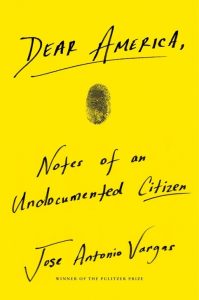 In 2011, Pulitzer Prize-winning journalist Jose Antonio Vargas published an explosive article in the New York Times Magazine outing himself as an undocumented immigrant. This past year, I read his book Dear America: Notes of an Undocumented Citizen, which he says is a book not just about migration, but also about homelessness. Not in the traditional sense, but in the unsettled, unmoored psychological state in which so many undocumented immigrants find themselves. I can relate, I too was once undocumented and had to do everything to prove that I was a contributing member of the American society, a scholar, a professor, a good neighbour, and a trusty colleague.
In 2011, Pulitzer Prize-winning journalist Jose Antonio Vargas published an explosive article in the New York Times Magazine outing himself as an undocumented immigrant. This past year, I read his book Dear America: Notes of an Undocumented Citizen, which he says is a book not just about migration, but also about homelessness. Not in the traditional sense, but in the unsettled, unmoored psychological state in which so many undocumented immigrants find themselves. I can relate, I too was once undocumented and had to do everything to prove that I was a contributing member of the American society, a scholar, a professor, a good neighbour, and a trusty colleague.
I have assigned this book in my class on Accented Narratives for the first time this semester. I am looking forward to my students’ reaction to Jose’s account. Hopefully, the book will give them a glimpse into the lives of undocumented people and make them realize that, as Mary Waters points out in her review of the book, many undocumented immigrants cannot change their legal status. They cannot “get in line” to get legal for the simple reason that there is no line.
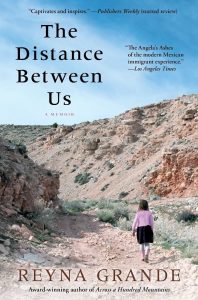 Reyna Grande’s memoir The Distance Between Us tells a very different story about illegal immigration. It is a story of poverty that forces children out of school and into the fields. It is a story of mothers who abandon their children and fathers who drink their worry away until they become violent. It is a story of children who rise above their poverty, abandonment, and abuse to live out their dreams and contribute to the scholarly and literary world. It is often told from a point of view of the child who experienced a very hard life on both sides of the US-Mexico border. The language of the story is plain, but perhaps the simplicity of the prose forces us to focus on the plot even more.
Reyna Grande’s memoir The Distance Between Us tells a very different story about illegal immigration. It is a story of poverty that forces children out of school and into the fields. It is a story of mothers who abandon their children and fathers who drink their worry away until they become violent. It is a story of children who rise above their poverty, abandonment, and abuse to live out their dreams and contribute to the scholarly and literary world. It is often told from a point of view of the child who experienced a very hard life on both sides of the US-Mexico border. The language of the story is plain, but perhaps the simplicity of the prose forces us to focus on the plot even more.
I have spent six month in Thailand this year teaching and working with migration scholars at Chulalongkorn University in Bangkok. Since I like milieu reading, I asked my Thai friends to recommend a novel about migration to Thailand. Several mentioned Letters from Thailand by Botan. I headed their recommendation and the book did not disappoint. This is a story of Tan Suang U, a young man who leaves China to make his fortune in Thailand at the close of World War II, and ends up marrying, raising a family, and operating a successful business. The novel unfolds through his letters to his beloved mother in southern China.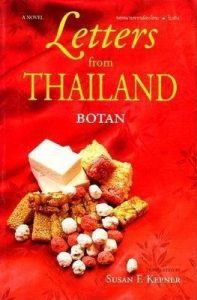
While the book is a work of fiction, it strongly resembles the letters from Polish immigrants to America included in the classic The Polish Peasant in Europe and America, by William I. Thomas and Florian Znaniecki. Migration scholars, especially anthropologists, try to avoid essentializing migration experiences, but reading Letters from Thailand one cannot stop thinking about similarities in many migration trajectories of migrants from far-flung parts of the world.

